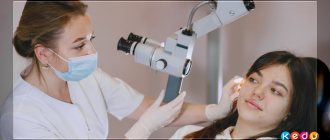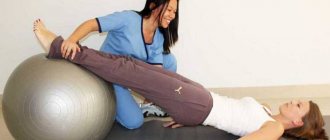22 June 2021
9412
0
1.5 out of 5
Neurosurgery is a young but dynamically developing field of medicine. It became a separate medical specialty at the turn of the 19th and 20th centuries. But, like almost any science, it is rooted in antiquity.
There is evidence that already during the development of the Inca civilization, craniotomies and even bone grafting of the skull with gold and silver plates were carried out.⠀
Both in the time of Hippocrates and in the Middle Ages, craniotomy was also carried out, which was the subject of many medical materials of those times, but until the mid-18th century, almost all surgical interventions and operations on the skull ended in death.⠀
In Russia, neurosurgery developed gradually: from small studies and attempts to describe the structure of the nervous system, to the beginning of mass production of surgical instruments and the performance of full-fledged operations. The operations were carried out mainly due to the occurrence of tumors and the presence of traumatic brain injuries.⠀
Over time, separate areas began to emerge from general neurosurgery, such as pediatric neurosurgery, neurotraumatology, neuro-oncology, vascular diseases of the central nervous system and others.
A neurosurgeon is a specialist who deals with problems of the central and peripheral nervous system, namely diseases of the brain, spinal cord and peripheral nerves.
Neurosurgery is a precise, specialized field that is constantly changing as technology advances, requiring a long learning curve.
The majority of patients who consult a neurosurgeon are patients with back pain. Therefore, below we will talk specifically about neurosurgeons who deal with spinal problems.
How is a neurosurgeon different from a neurologist?
Both a neurologist and a neurosurgeon are medical specialists who deal with disorders of the nervous system: the mechanisms of their development and manifestation (pathogenesis), identifying symptoms and direct treatment.
The main difference between them is that a neurologist deals with conservative therapeutic treatment of diseases, while a neurosurgeon deals with more serious cases that require surgical intervention.
Typically, a neurologist is the first to detect a disease, identifies it and prescribes therapeutic treatment himself, or sends him for a consultation with a neurosurgeon to choose the most optimal treatment option.
Neurosurgeons can treat patients either conservatively or surgically. But not in all cases the neurosurgeon will insist on surgical intervention. If it is possible to avoid it, as well as in the event of a possible risk for the patient, the choice will be conservative therapeutic treatment.
A patient may require both a neurologist and a neurosurgeon, or just one, depending on the condition being treated and its severity. In some cases, surgery may be necessary first, performed by a neurosurgeon, with long-term follow-up by a neurologist.
Vascular neurosurgery
We also treat vascular pathology of the brain. These are hemorrhagic strokes (when cerebrovascular accident and damage to brain tissue occurs due to rupture of an artery with bleeding), sometimes ischemic strokes (when blood does not flow to the brain due to blockage or severe narrowing of the main arteries and, as a result, brain tissue cells die), as well as cerebral aneurysms, which can rupture and cause subarachnoid hemorrhage.
Neurosurgeons also treat other vascular abnormalities. Among them are vascular malformations - developmental anomalies that lead to gross changes in the structure and function of an organ or tissue. This may be a congenital or acquired developmental defect. And also brain cavernomas, or cavernous angiomas, hemangiomas. This is the name of a benign tumor, which consists of the same tissue as the vessels, and inside it there is blood or blood clots.
Areas of expertise of a spine neurosurgeon
The expertise of a neurosurgeon includes chronic back pain that is poorly responsive to conservative treatment. The vast majority of patients are treated for a long time, sometimes unsuccessfully, by doctors of various specialties with spinal osteochondrosis.
A spinal neurosurgeon is engaged in finding the cause and eliminating back pain.
Deforming spondylosis, herniated intervertebral discs, segmental instability of the vertebrae, the development of weakness in the muscles of the limbs - all this requires consultation with a neurosurgeon.
Prevention of the development of complications of these diseases consists of a competent, timely examination, including highly informative methods (computer and magnetic resonance imaging). A neurosurgeon, having examined a patient with chronic back pain, determines a list of necessary examinations, and then the tactics of treating the patient - conservative, including drug therapy, physical therapy, massage and physiotherapy, or surgical.
In recent years, minimally invasive interventions on the spine for osteochondrosis have been widely used, including the use of endoscopes, medical lasers, ultrasound and high-frequency energy generators, carried out under X-ray control and local anesthesia by inserting a needle into the affected disc and restoring it. The result of these operations, when prescribed and carried out correctly, is in most cases quick and successful; in addition, patients spend only a few days in the clinic.
It should be noted that in some cases, spinal diseases require serious interventions, special structures and implants. After surgery, all patients undergo a course of rehabilitation, which allows them to consolidate the achieved results and significantly improve their quality of life.
There are other diseases of the spine and spinal cord: spinal hemangiomas, spinal cord tumors, metastases, spondylodiscitis, abscesses, myelitis, syringomyelia, etc., which are treated by neurosurgeons.
Another reason for turning to neurosurgeons is such a common symptom as dizziness. It can be quite difficult to figure out the cause of dizziness. The vestibular apparatus is located inside the temporal bone, connected to the inner ear, and the nerve leaving the ear is closely connected to the brain stem, has several nuclei and many connections with different parts of the cerebral cortex and cerebellum. These connections, as well as the vestibular system and nerve itself, can be damaged by swelling, inflammation, or improper blood supply. Neurosurgeons are assisted in identifying the cause of dizziness by ENT doctors and otoneurologists. Blood flow in the vessels of not only the brain, but also the spine, as well as the condition of the discs and ligaments around the vertebral arteries, is often examined to exclude instability of the cervical segments and arterial spasm.
In addition to the above diseases, neurosurgeons are involved in the treatment of acute injuries to the nervous system (damage to the spine and spinal cord, injuries to peripheral nerves and tendons of the extremities) and various consequences of these injuries.
Among other things, an important section of this specialty is the so-called functional neurosurgery - the provision of surgical and medicinal care to patients with various pain phenomena (pain due to neuralgia, neuritis, causalgia, phantom pain and others), including various types of therapeutic blockades, the use of electrical stimulation, the use of medical lasers , implantation of systems for analgesic electrical stimulation, operations to decompress nerve trunks in narrow canals (tunnel syndromes).
Some patients who have already had spinal surgery may require a consultation with a neurosurgeon as part of planning for “corrective” surgery to straighten the spine and correct overall balance that may have been compromised by previous interventions.
An important component in any branch of surgery is the rehabilitation of operated patients, especially in neurosurgery. The most important thing here is not to miss the time during which you can restore lost body functions. Therefore, with the participation of neurosurgeons, a plan of rehabilitation measures is developed and implemented, including therapeutic exercises, massage, the use of medical orthoses (corsets), the appointment of courses of physiotherapeutic procedures, and sanatorium-resort activities. Thanks to this, there is an earlier return to normal life in patients who have suffered even serious illnesses and injuries.
Functional disorders
There are many more diseases hidden in the head. These are, for example, hydrocephalus (when cerebrospinal fluid accumulates inside the skull), neurovascular conflict (trigeminal neuralgia, for example). In these cases, surgery is often required.
Or other functional disorders, such as epilepsy or parkinsonism - these are dealt with by functional neurosurgeons.
Diagnostic methods in neurosurgery
Radiography
Direct radiographs provide information about the normal anatomy and diseases of the spine, and can also detect pathologies such as fractures, cracks and curvatures in the neck, back, waist, tailbone and hip joints. The presence and degree of curvature of the back or waist can be determined using x-rays of scoliosis.
Computed tomography (CT)
Computed tomography is often used to examine and diagnose the spine. It allows you to determine the quality of bone tissue, its rarefaction, defects, osteoporosis, osteomyelitis, osteophytes at the initial stage of development, cartilage proliferation, degeneration of intervertebral discs (osteochondrosis, deforming spondylosis, intervertebral hernia, arthritis).
Magnetic resonance imaging (MRI)
Detailed images of extra and intracranial structures are obtained using MRI. This is the ability to make a cross-section (sagittal, coronal, axial, oblique) without changing the patient's position. With the help of MRI technology, the entire spinal column, spinal canal and spinal cord can be clearly visible from different angles. Superior to CT in the study of spinal pathologies.
Electromyography/Nerve Conduction Study (ENMG)
In the practice of neurosurgery, they are indispensable methods for diagnosing cuts of peripheral nerves, neuropathy, plexus lesions, disc herniation and other spinal cord lesions caused by other reasons, intramedullary pathology of the spinal cord.
Biopsy
A biopsy is performed using open surgery or a stereotactic method for accurate diagnosis and treatment planning for tumor, infectious, viral, and degenerative diseases of the central nervous system.
What symptoms should you contact a neurosurgeon for - all cases
The patient can be examined by the specified doctor on the referral of other specialists in the following cases:
- To determine the strength and nature of the skull injury. After examining the patient and carrying out diagnostic measures, the neurosurgeon makes a decision on the advisability of the operation.
- For oncological diseases of the spinal cord or brain.
- In the case of differentiated diagnosis of pathologies that relate to the functioning of brain components.
- In the presence of congenital anomalies associated with organs of the nervous system.
Patients with gunshot, stab, chopped and other wounds, as a result of which the structures of the nervous system were affected, need emergency assistance from a neurosurgeon.
Consultation with a neurosurgeon may be required if the following pathological conditions are present:
- Frequent migraines.
- Sudden fainting that occurred several times.
- Various tics (for example, twitching of the right or left eyelid).
- Unreasonable memory lapses.
- Tremor of the limbs and other parts of the body. What pathologies can hand tremors indicate?
- Epileptic seizures.
- Sudden onset muscle weakness that affects coordination of movements.
- Numbness of the toes against the background of regular pain in the lower extremities. Pain can be localized in various areas: hips, lower back, legs, feet. Such complaints may indicate that the patient has a lumbar hernia.
- Regular surges in blood pressure, which are combined with numbness/pain in the upper extremities and severe dizziness. Such phenomena are a characteristic sign of cervical hernias.
- Constant pain in the chest area may be a manifestation of a thoracic hernia. Often people whose body has been in a forced position for a long time complain of such discomfort. This pathology often occurs against the background of scoliosis.
- Nausea and vomiting, disorientation in space, clouding of consciousness, ringing in the ears and some other conditions that occur after a strong blow to the head. The listed symptoms are grounds for immediate hospitalization.
When is a consultation with a neurosurgeon required?
Postponing surgery for up to 2-3 months does not have a significant effect on the outcome of treatment. However, a period of 4 to 6 weeks is a certain limit for conservative approaches. If drug therapy for 10 days turns out to be ineffective, and there is no improvement even at week 6 (or pain has decreased, but the limbs and feet have become noticeably weaker, or muscle atrophy has begun), neuroimaging should be performed and a neurosurgeon should be consulted.
If the patient’s complaints coincide with his neurological condition, and CT and MR scans reveal a disc herniation at the appropriate level, surgery is performed. It may not give the desired result in cases if it is performed too late, that is, when there are already disturbances in the functioning of the internal organs of the small pelvis and - or persistent weakness of the legs (feet) or even paralysis has developed.
So, when is a consultation with a neurosurgeon necessary in the near future? When the following list of clinical signs develops:
- Numbness of the limbs, accompanied by pain in the lower back, radiating along the limb;
- No effect of treatment > 6 weeks;
- Recently had an injury;
- The pain is not associated with movement and does not go away at night or with rest;
- Urinary incontinence (retention), weakness in the legs or arms, and numbness of the perineum appeared.
What should you bring with you to your consultation?
As a rule, people come to see a neurosurgeon after consulting doctors of other specialties. First of all, in the direction of a neurologist.
When planning an appointment with a neurosurgeon, prepare in advance the medical documentation you already have on hand:
- conclusion of a neurologist and other specialists (ophthalmologist, otolaryngologist, etc.);
- MRI (magnetic resonance imaging) and/or CT (computed tomography) data, EMG. Be sure to take not only the conclusion, but also the result on film and disk.
After seeing a neurosurgeon, you may need to repeat MRI, CT and other instrumental studies. If a tumor process is suspected, it will be necessary to undergo laboratory diagnostics, in particular, determination of tumor markers in the blood).
At your initial appointment with a neurosurgery specialist, all treatment options are discussed. If the neurological disorder is not critical, patients may be prescribed drug therapy (painkillers or anti-inflammatory drugs), physical treatments (physiotherapy, manual therapy, reflexology, massage) or pain-relieving injections, blockades. If these so-called conservative treatment methods do not relieve pain, surgical treatment may be necessary, which is discussed in detail with patients and their relatives.
Competence of a neurosurgeon: what the specialist does and what organs he treats
Having an appointment with a doctor of this specialization, the patient, first of all, undergoes a thorough examination. The neurosurgeon examines the patient’s complaints, external manifestations of the disease, and, if necessary, prescribes additional examinations. In addition to a comprehensive examination, the doctor consults patients on all issues related to their condition, conducts preoperative preparation of the patient, and directly carries out neurosurgical operations with the participation of other specialists, for example, an anesthesiologist, resuscitator.
In addition, the neurosurgeon is also responsible for the postoperative condition of the patient, determines and prescribes rehabilitation measures, as well as a conservative treatment regimen.
The organs and parts of the body treated by a neurosurgeon are:
- skull;
- brain;
- spine.
In addition, the doctor is competent in issues of diseases of the nervous system that require surgical intervention.
For the treatment of problems and pathologies of the nervous system and brain in children, patients are usually seen by a pediatric neurosurgeon.
Is neurosurgery dangerous?
The degree of risk of surgical intervention depends on the type and location of the operation. Today, thanks to innovative technologies, patients with spinal diseases are offered minimally invasive surgical methods that can reduce postoperative pain, reduce hospitalization time and quickly return to normal life.
In the case of some diseases, such as intervertebral hernia (in the lumbar or cervical region), as well as during surgery for decompression of the lumbar spinal canal, patients are offered treatment in a one-day hospital. Other pathologies requiring surgery may require longer hospitalization, from 3 to 7 days.
After the operation, the patient is monitored by medical staff throughout the entire rehabilitation period. Medical practice, based on the principles of evidence-based medicine and meeting the individual needs of patients, is the basis for the effectiveness of treatment in neurosurgery. Thanks to the use of new methods of minimally invasive surgery and accelerated recovery protocols, most patients can move independently in the evening or the next day after surgery. Depending on the operation, the patient can return to normal life within 3-6 weeks. In some cases, for a complete and rapid recovery, especially after “corrective” spinal surgery, the patient may be assigned a recovery program (7 to 14 days) at a rehabilitation center.
After a comprehensive comprehensive examination and treatment, the patient is given detailed recommendations on further preventive and supportive treatment, lifestyle, to prevent relapses of the disease and maximum social adaptation.
Spinal surgery
One of the largest areas of activity of neurosurgeons is spine surgery and treatment. In the summer, spinal injuries are one of the most “popular” ones - people dive headfirst, not knowing the bottom, and get injuries to the cervical spine that need to be operated on. Sometimes they end tragically - with paralysis of the entire body below the neck. So before you jump headfirst, study the bottom, or better yet, jump feet first: it’s better to break two legs than to remain paralyzed for life.
Also, very often people end up in the hospital after an accident with a fracture of the lumbar and thoracic spine or a fall from a height.
Our neurosurgeons
- Barchenko Boris Yurievich - vertebrologist, neurosurgeon, traumatologist - orthopedist.
- Shaboldin Andrey Nikolaevich - spinal surgeon, vertebrologist, candidate of medical sciences, traumatologist - orthopedist.
Our doctors have extensive clinical experience in the field of surgical treatment of the spine and constantly improve and update their theoretical base by participating in Russian and international symposia and conferences dedicated to this field of medicine. They have thousands of successful operations and thanks from patients who have regained the joy of free movement and life without pain.
How is the initial appointment going?
During the consultation, the doctor interviews the patient, analyzes the medical history and information received about symptoms, previous injuries, damage, and diseases. After collecting a detailed medical history, the neurosurgeon performs an examination and, to obtain a complete clinical picture, prescribes a number of laboratory and instrumental studies, including:
- radiography;
- CT, MRI, PET;
- Ultrasound with Doppler sonography;
- lumbar (spinal) puncture;
- biopsy;
- myelography;
- echoencephalography, electroencephalography;
- blood tests (general, coagulation tests, etc.).
Surgery is the main method of treatment in the field of neurosurgery. Emergency interventions are aimed at saving lives. They require immediate action and are carried out with minimal preparation without conducting a large number of the above studies.
Cost of treatment
The exact cost of operations is determined by a number of factors: the specific disease, the patient’s condition, concomitant pathologies and a number of others. To clarify the cost, it is necessary to consult a doctor and a number of diagnostic measures
| Name of service: | Cost, rub. |
| Primary appointment with a surgeon | 2500 rub. |
| Repeated appointment with the surgeon | 2500 rub. |
| Appointment with a surgeon, Ph.D. primary | 3500 rub. |
| Appointment with a surgeon, Ph.D. repeated | 3500 rub. |
| Appointment with a surgeon, MD. primary | 4500 rub. |
| Appointment with a surgeon, MD. repeated | 4500 rub. |








